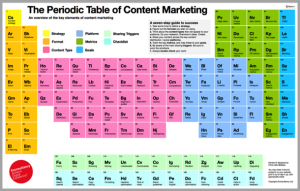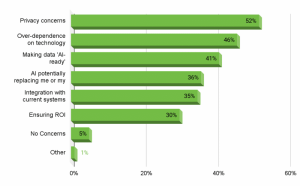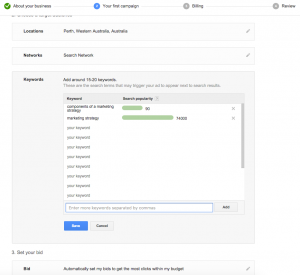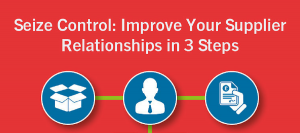 We all know that we live in an amazingly uncertain world full of doubts and reservations. Questions and misgivings about all manner of things, big and small, race through our heads constantly.
We all know that we live in an amazingly uncertain world full of doubts and reservations. Questions and misgivings about all manner of things, big and small, race through our heads constantly.
On the global stage, we wonder: What does the future hold for the economy — what’s going to happen with Greece’s financial crisis? Will it damage the European economy at large? How will this and other struggling member nations affect the euro and the dollar’s standing against it? How will the dollar fare against the Japanese yen or the Chinese yuan? Will it perform against Brazil’s strengthening real?
As Americans, we ask ourselves what will happen with Social Security in the future, and whether our retirement savings are truly secure. Let’s face it, last week hackers were able to break into a Social Security database and take key financial information, including Social Security numbers, from a good number of U.S. taxpayers. We fret about whether our government will ever be effective again, and who will win the next general election, and if it will even matter.
Uncertainty is present in every facet of life, and how we process and deal with it determines how successful we are. Whether in business or your personal life, any strategy based on uncertainty is inherently high-risk — and that risk decreases as certainty forms.
Increasing certainty about anything you’re unsure of is categorically beneficial, and you can do this by discerning the certain elements of any situation from the uncertain ones. I’ve spent the past 30+ years developing a proven methodology of doing this, a Science of Certainty. This science hinges around my principle of Anticipation — that is, making sure you’re ahead of the game and predicting future trends instead of simply reacting to disruptions, be they in your industry or in your personal life. The Science of Certainty is all about separating the Soft Trends, things that might happen in the future, from the Hard Trends, things that will happen.
Wherever we can feel a true sense of certainty, we can use the resulting high level of confidence to our advantage by applying this science. For example, while we may not be sure of how the economy will look in a few months, let alone a few years, we know stocks will continue to fluctuate, and by discerning Hard Trends based on what we know, we can capitalize on these certainties in our business practices.
Based on linear, one-way change (one of the two major types of change, the other being cyclical), we can conclude our increasing dependence on the use of technology will continue to increase, representing a Hard Trend within an uncertain economy. More people and businesses than ever are buying smartphones, using cloud computing, and engaging big data with high-speed data analytics. This pattern will not reverse or cycle around — obviously, few people with an iPhone 6 would want to go back to using an iPhone 3 or a flip phone, just as organizations that are using high-speed data analytics would not go back to using their old, slower analytics system — meaning their increasing use is a Hard Trend, a predictable pattern of irreversible linear change. In addition, the Three Digital Accelerators I identified way back in 1983, the exponential growth of processing power, digital storage and bandwidth, will continue to drive the one-way linear change curve to predictable, exponential levels. That’s a Hard Trend that will continue to cause digital disruption. And clearly, the most anticipatory businesses and leaders have realized this and are capitalizing on these accelerating areas of growth.
Now, these are just a few examples, but they demonstrate that with certainty comes empowerment and strategic confidence. And while you can’t be sure of everything, any added certainty can make a difference and give you the confidence to make bold moves — while those failing to utilize the Science of Certainty and the Anticipatory Methodology are left scrambling to react to changes in their industries.
This is especially important from a business standpoint, where trying to simply keep up with the pack is a fool’s game. There’s no advantage in keeping up, but trying to jump ahead of your competition is risky unless you use the Science of Certainty to figure out what Hard Trends will impact and disrupt your industry in the future, and acting on it before your competition does.
From a sales standpoint, uncertainty can be a tool to open the door to a sale, but certainty is one of the best tools for closing a sale. If you can guide a prospective customer or client from a place where they feel uncertain to where they’re certain and therefore confident in what you are saying and the product, service or concept you are selling, you’ve not only come that much closer to closing a sale, you’ve also built an essential level of trust with your customer.
For example, if you’re looking to build a home but are unsure of the designer or construction company you want to use, you’re unlikely to sign a contract — but a confident professional can increase your certainty by supplying you with key details, like building plans, a scope of work, and a guaranteed completion date.
At the end of the day, everybody’s selling something. Babies cry, selling you on paying attention to them because you’re certain there’s something wrong; teenagers act out for the very same reason. As adults, we sell ourselves, by virtue of our skills, to our employers. We sell products to customers and clients when they have a high level of certainty. In our personal lives, we deepen our relationships with friends, and colleagues, and build new relationships by increasing their level of trust thanks to their level of certainty in who we are. We do all of this, whether we know it or not, by using the Science of Certainty — and the sooner we understand how to use this, the more successful we’ll become in any endeavor we undertake.
(191)






